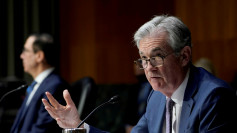China's cooling economy is weighing heavily on the government's mind as the number of approved investment projects jumped to almost quadruple the amount in July. These projects, mostly in the infrastructure sector, are meant to help the economy after the US decided to make good on its first and second round of tariffs on Chinese goods.
Reuters reports that China just gave the thumbs up on a number of projects only last July when the Chinese economy started slowing. Compared to June, China approved 77.69 billion yuan ($11.24 billion) for these projects. June's spending amounted to about 20.8 billion yuan. The figures came from Zhao Chenxin of the National Development and Reform Commission (NDRC).
The government may be shifting towards opportunities that help growth in the long run, but it puts it at risk of creating problems as well. Problems like hasty funding in the past have resulted in the current government crackdown on projects deemed detrimental to the government's efforts. To that end, the spending on projects is not mimicked by Chinese consumers, which had limited their spending.
The Chinese measures are meant to arrest the skid of the economy, but it appears that this might not be the case in the long run.
These projects have very long lead times, according to NY Times. Even when approved this year, their effects may only be felt early next year, negating their supposed aid to stop the bleeding of the economy.
Economic think-tank Nomura has their own version of China's infrastructure approvals. To them, they think China is looking at things cautiously. This 'stimulus package,' they say, is borne of past mistakes and lessons learned, and won't turn out like the others did.
To this end, the government appears to keep on top of the situation. Policies meant to create a well-implemented strategy for sustainable economic growth will be introduced, according to state radio. There will also be other measures like easing small firms' problems with regards to financing as well as private investment access for a few sectors.




